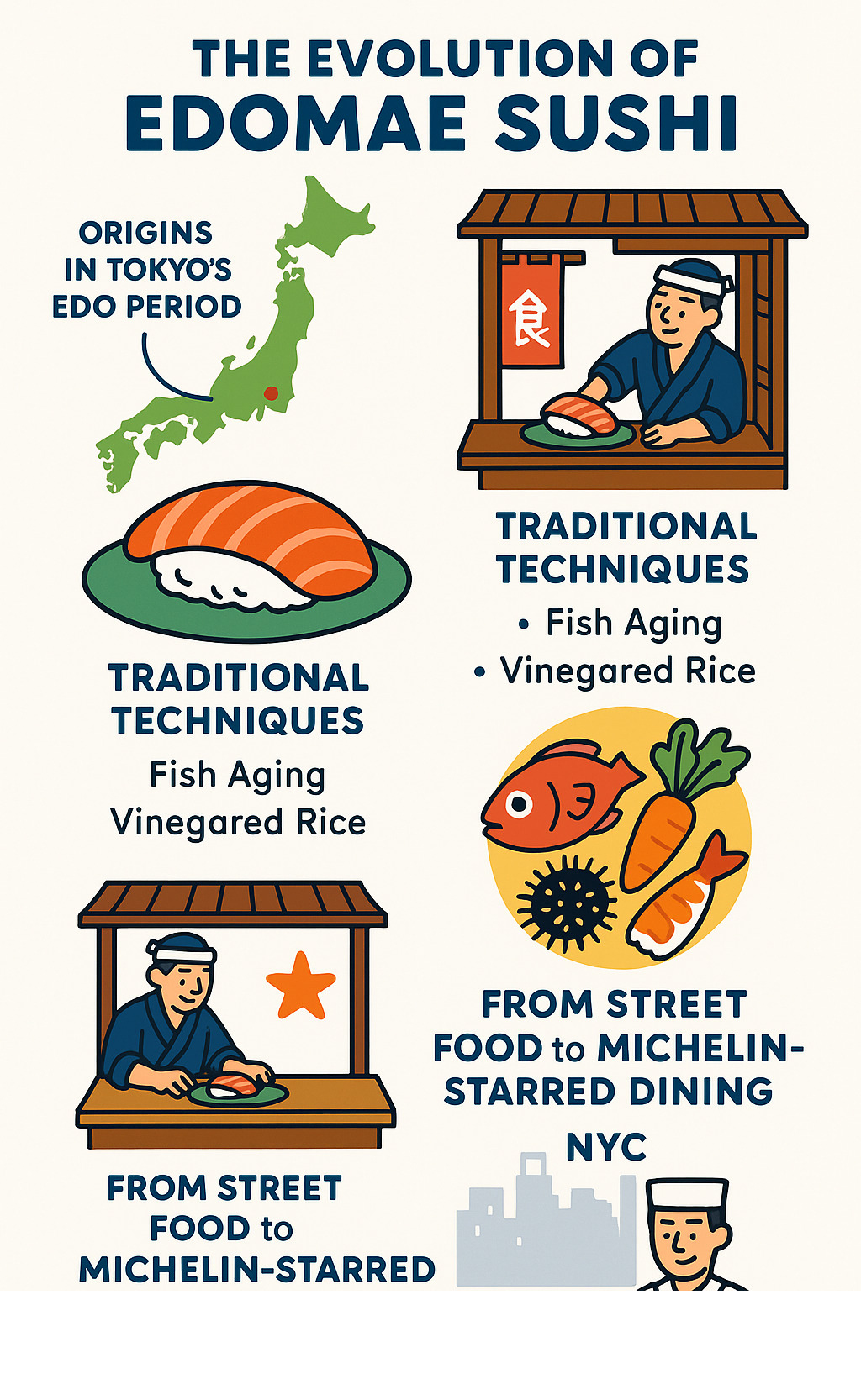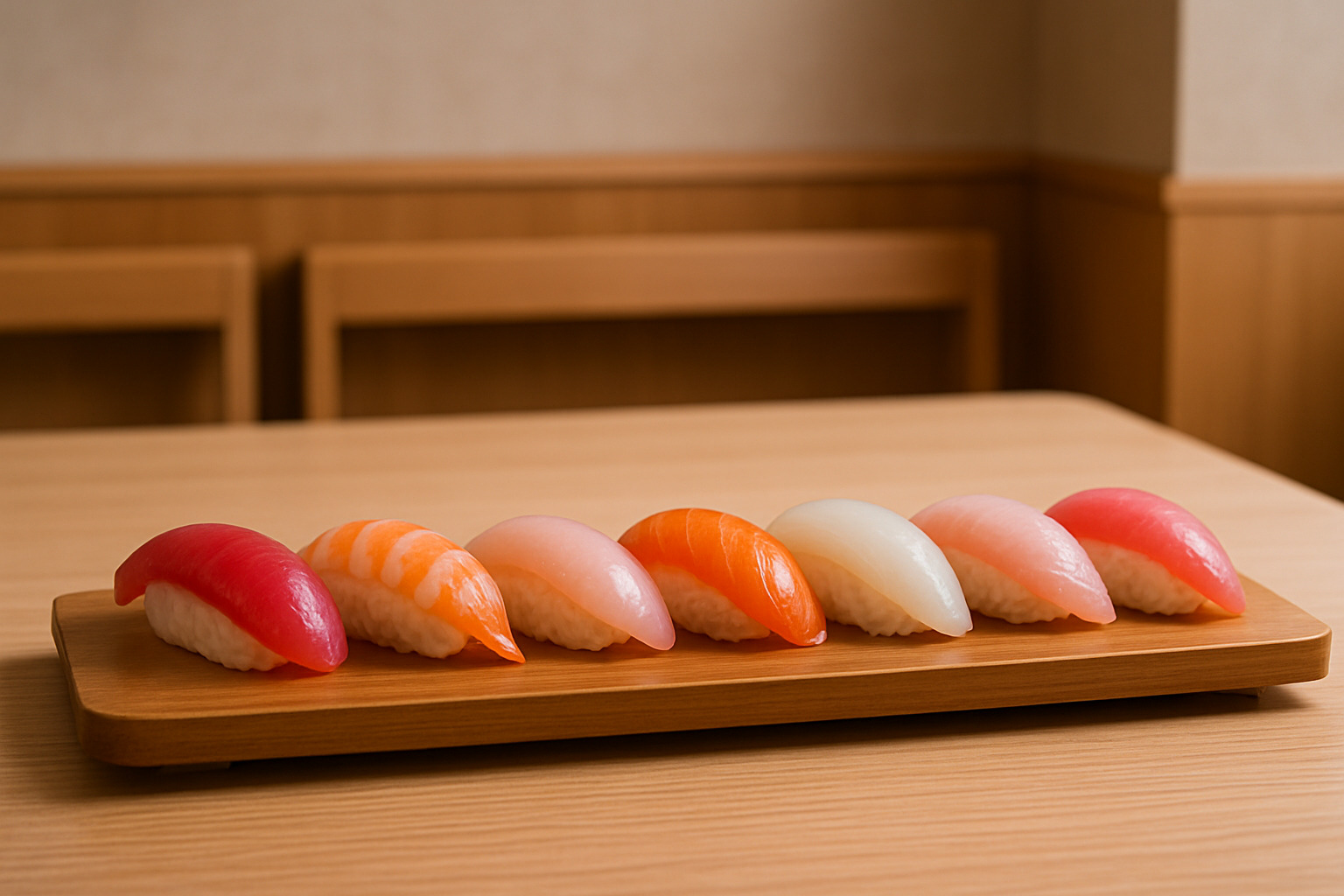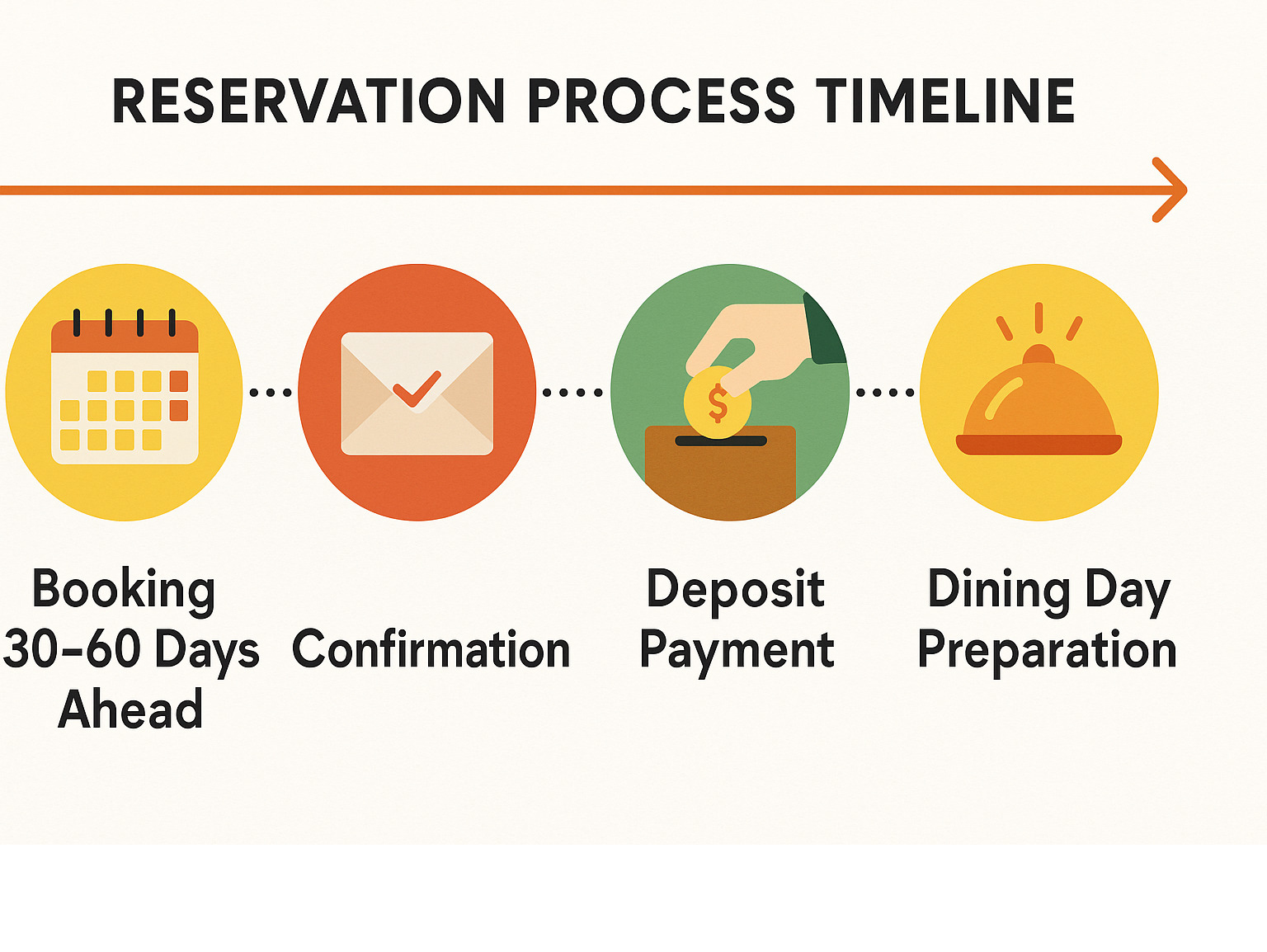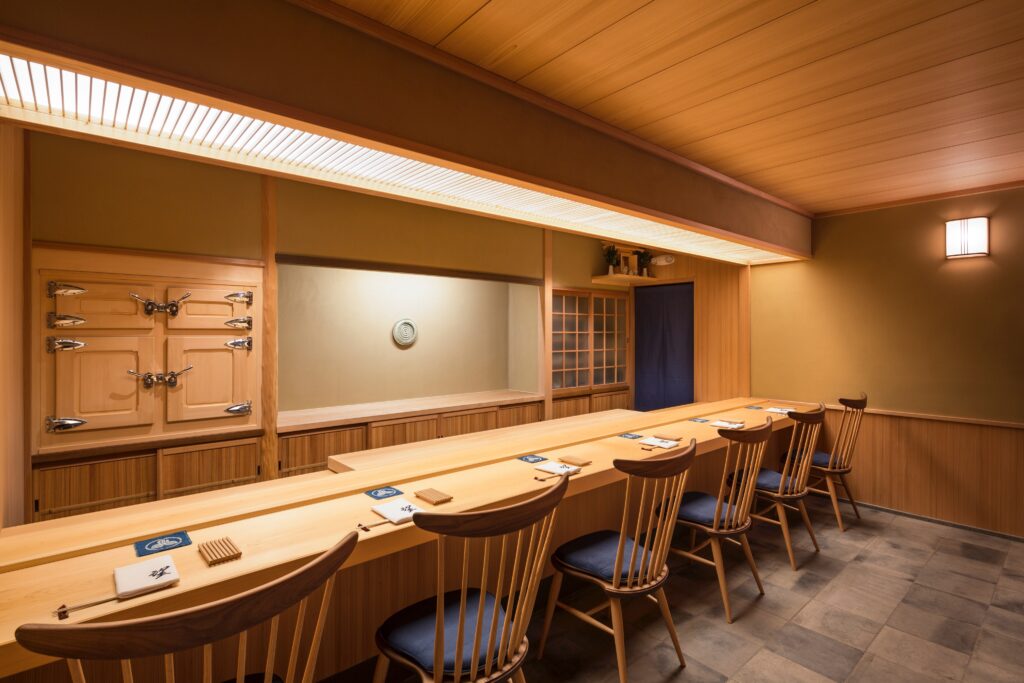Why Sushi Noz Represents the Pinnacle of Edomae Sushi
Sushi Noz stands as one of New York City’s most exclusive dining destinations, earning two Michelin stars for its authentic Edomae-style omakase experience. Located on the Upper East Side, this intimate 14-seat restaurant offers an unparalleled journey through traditional Japanese sushi craftsmanship.
Quick Facts About Sushi Noz:
- Location: Upper East Side, New York City
- Chef: Nozomu Abe
- Michelin Stars: 2 (awarded 2023)
- Seating: 14 total (8 at Hinoki Counter, 6 in Ash Room)
- Price: $495 per person for omakase
- Duration: 2.5 hours
- Reservations: Required via OpenTable, book 30-60 days ahead
Chef Nozomu Abe’s vision transforms each meal into what one reviewer described as stepping “through the Noren” and feeling “as if you’ve emerged in Japan.” The restaurant’s design mirrors an ancient Kyoto temple, featuring a 200-year-old hinoki wood counter crafted without a single nail using traditional joinery techniques.
The omakase experience begins with 5-6 otsumami (small plates), followed by 12-14 courses of seasonal nigiri, then concludes with miso soup, tamago, and dessert. Each dish showcases Abe’s mastery of traditional Edomae techniques, where fish is aged and prepared using methods dating back to Japan’s Edo period.
What sets Sushi Noz apart is its intimate atmosphere and Chef Abe’s personal attention to each guest. The restaurant operates with the precision of a temple ceremony, where every detail – from the kimono-dressed staff to the precise timing of each course – creates what diners describe as a “sacred space” for experiencing authentic Japanese hospitality.

Know your sushi noz terms:
The Essence of Sushi Noz
Stepping into Sushi Noz feels like entering a sacred temple dedicated to the art of sushi. This two-Michelin-starred gem has carved out its own special corner on New York City’s Upper East Side, where Chef Nozomu Abe has created something truly extraordinary – an authentic Edomae sushi experience that transports you straight to Japan.
The restaurant’s intimate setting at coordinates 40°46′25.9″N 73°57′29.3″W isn’t just about exclusivity, though the eight-seat counter and six-seat ash room certainly create that feeling. It’s about creating a space where Chef Abe can personally connect with each guest, watching their reactions and adjusting the experience accordingly.
What strikes you immediately is the authenticity woven into every detail. The 200-year-old hinoki wood counter wasn’t chosen for show – it’s the same wood used in traditional Japanese temples, believed to purify the space. Even the ice chest follows Edo-period design, keeping fish at perfect temperatures just like sushi masters did centuries ago.
One diner perfectly captured the atmosphere: “There is a certain energy that courses through this sacred space, where every detail recreates an intimate Japanese refuge.” That’s exactly what Chef Abe set out to create – not just a restaurant, but a complete sensory journey.
Sushi Noz Location & Chef Backstory
Chef Nozomu Abe’s path to Sushi Noz began in the most authentic way possible – through family tradition. Growing up in Hokkaido, his grandfather’s seafood company gave him early access to some of Japan’s finest ingredients. Imagine a young Abe tasting pristine uni, salmon roe, and king crab, developing a palate that would later set the standard for New York City’s sushi scene.
His apprenticeship followed the traditional Japanese model – no shortcuts, no compromises. Those 15-hour workdays learning Edomae techniques weren’t just about mastering knife skills. He learned the ancient art of aging fish, understanding how time and careful preparation transform simple ingredients into complex, umami-rich experiences.
The Edomae style itself tells a fascinating story. Born in Tokyo during the Edo period, these techniques developed out of necessity – how to preserve fish in a time before refrigeration. What started as practical solutions became refined art forms, with fermentation and aging methods that create flavors impossible to achieve any other way.
Abe’s craftsmanship shows in his daily ritual of personally selecting every ingredient. He doesn’t delegate this responsibility because he understands that exceptional sushi starts with exceptional fish. This dedication has earned him respect not just from critics, but from fellow chefs who know how difficult it is to maintain such standards day after day.
Sushi Noz Philosophy & Accolades
The heart of Sushi Noz beats with the rhythm of kaizen – the Japanese philosophy of continuous improvement. Chef Abe didn’t just want to create another sushi restaurant; he wanted to craft what he calls “a superlative dining experience – memorable, intimate, neat, and a feast for the senses.”
When the two Michelin stars arrived in 2023, they represented more than culinary achievement. They recognized Abe’s commitment to omotenashi – the Japanese art of hospitality that goes beyond service to genuine care for each guest’s experience. The staff, dressed in traditional kimono, embody this philosophy through their graceful attention to detail.
The intimacy of the space plays a crucial role in this philosophy. With only 14 seats, every service becomes a performance where perfection isn’t just expected – it’s required. There’s no hiding behind volume or busy nights. Every dish must be flawless, every interaction meaningful, every guest experience unforgettable.
This level of consistency has positioned Sushi Noz among New York City’s most respected dining destinations. The restaurant’s success proves that authenticity and tradition, when executed with passion and precision, can create something truly transformative in the modern dining landscape.
Omakase Journey: Menu Structure & Signature Bites
The magic of Sushi Noz unfolds through a carefully orchestrated omakase that follows centuries-old traditions. Your culinary journey begins with 5-6 otsumami (small appetizer plates) that gently awaken your palate, then flows into the heart of the experience – 12-14 pieces of seasonal nigiri arranged in a thoughtful progression from lean to fatty fish. The meal concludes with traditional miso soup, tamago, and a show-stopping dessert that will leave you speechless.
This isn’t just a random collection of dishes thrown together. Chef Abe designs each progression to build flavors gradually, allowing your taste buds to appreciate the subtle differences between each piece. Seasonality drives every decision – rather than following a rigid menu, the chef selects ingredients based on what’s at absolute peak quality that day.

What makes this experience truly special is the fermentation and aging processes that define authentic Edomae sushi. Fish might be aged for days or even weeks, developing deeper umami notes that dance perfectly with the vinegar-seasoned rice. This ancient technique, perfected over centuries in Tokyo, creates the sophisticated taste that sets Sushi Noz apart from your typical sushi spot.
The beverage pairings aren’t an afterthought – they’re an integral part of your sensory journey. You can choose between Signature and Prestige pairing options, featuring carefully selected sake, champagne, and white wine that complement each course. These pairings are timed to arrive with specific dishes, creating harmony that improves both the food and drink.
For those curious about traditional sushi preparations, our guides on Nigiri and Sashimi offer deeper insights into these fundamental styles.
Highlights of the Otsumami Course
The otsumami course at Sushi Noz showcases Chef Abe’s creativity while respecting traditional boundaries. These small plates serve as your introduction to his philosophy – highlighting natural flavors rather than masking them with heavy sauces or complicated preparations.
The sea perch with fresh ponzu sets the tone beautifully. The delicate fish pairs with bright citrus acidity that awakens your palate without overwhelming it. The ponzu, made fresh daily, provides that clean, refreshing start that prepares you for the journey ahead.
Then comes the playful eel “noodles” with salted egg yolk cream and crispy tofu – a dish that showcases Abe’s technical skill and sense of humor. The eel, prepared using time-honored techniques, gets transformed into noodle-like strands that provide textural interest while maintaining those rich, complex flavors that make eel so prized.
The botan ebi tempura demonstrates how traditional cooking methods can lift premium ingredients. The sweet shrimp gets lightly battered and fried at precise temperatures, maintaining its delicate texture while developing a crispy exterior that adds wonderful contrast to the meal’s progression.
Signature Nigiri Progression
The nigiri progression at Sushi Noz follows the traditional lean-to-fatty sequence that allows you to appreciate the full spectrum of flavors and textures. This careful orchestration ensures each piece builds upon the previous one without overwhelming your palate.
Sumi-ika (squid) often appears early in the progression, showcasing the chef’s knife skills and the ingredient’s clean, oceanic flavor. The squid’s firm texture provides a foundation for the richer fish that follow, while its subtle sweetness prepares your palate for more complex flavors ahead.
The uni and salmon roe course represents a pinnacle moment in your meal. Chef Abe’s Hokkaido connections ensure access to premium uni that literally melts on your tongue, while the salmon roe provides bursts of briny intensity. This combination showcases the chef’s understanding of how contrasting textures and complementary flavors create truly memorable experiences.
The honmaguro (bluefin tuna) progression typically includes multiple cuts – akami (lean), chu-toro (medium fatty), and o-toro (fatty belly). Each piece demonstrates different aging techniques and fat distributions, creating a masterclass in tuna preparation. The progression from lean to fatty allows you to understand how the same fish can provide completely different experiences based on the cut and preparation method.
Those interested in learning more about these traditional ingredients can explore our detailed guide on Masago and other sushi components.
Dessert & Beverage Pairings
The meal’s conclusion features the legendary Miyazaki mango, which can cost over $200 per fruit and measures around 12 on the Brix sweetness scale. This isn’t just dessert – it’s a statement about the restaurant’s commitment to sourcing the finest ingredients regardless of cost.
The mango’s presentation is as important as its flavor. Served at precise temperature and cut with surgical precision, it provides a sweet, tropical conclusion that cleanses your palate while leaving you with a lasting impression of luxury and attention to detail.
The beverage pairings throughout the meal deserve special mention. The Signature Pairing combines sake, champagne, and white wine in a progression that complements the food without competing with it. The Prestige Pairing lifts this concept with premium selections that cost significantly more but provide experiences that justify every penny.
Each pairing arrives with specific courses, creating harmony between food and drink that improves both elements. The sake selections often include rare bottles you won’t find elsewhere, while the champagne and wine choices reflect the same attention to quality that defines every aspect of the Sushi Noz experience.
Design & Atmosphere: Hinoki Counter vs. Ash Room
The design of Sushi Noz transports diners into what feels like an ancient Kyoto temple. Every element, from the 200-year-old hinoki wood counter to the tamo ash wood surfaces, was chosen to create an environment that promotes harmony and well-being.
The sukiya-style architecture, assembled without a single nail using traditional Japanese joinery techniques, demonstrates the same attention to craft that defines the cuisine. More than a dozen types of cedar were used in construction, creating subtle variations in grain and color that add visual interest while maintaining the serene atmosphere.
The restaurant’s two distinct seating areas offer different but equally compelling experiences. The pricing strategy equalizes costs between the two spaces, removing any perceived hierarchy and allowing guests to choose based on preference rather than budget constraints.
This design philosophy extends to every detail, from the traditional ice chest modeled on Edo-period refrigeration to the way Michelin stars are mounted above the counter. These elements aren’t decorative – they’re functional components that contribute to the overall experience while honoring traditional Japanese aesthetics.
For those interested in exploring more exceptional dining environments, our guide to Best Culinary Experiences showcases similar attention to atmosphere and design.
The Sacred Hinoki Counter — sushi noz
The hinoki counter represents the heart of Sushi Noz. This 200-year-old piece of wood, crafted from a single tree, provides the stage where Chef Abe performs his culinary artistry. The eight seats arranged around this counter offer what many consider the ultimate sushi experience.
Sitting at the hinoki counter means front-row access to Chef Abe’s technique. Diners can observe the precise knife work, the careful rice preparation, and the thoughtful presentation that defines each piece. This interaction between chef and guest creates a connection that lifts the meal beyond simple dining into cultural exchange.
The counter’s design incorporates traditional elements like the ice chest, which maintains ingredients at optimal temperatures while honoring historical preservation methods. These functional details add authenticity while serving practical purposes that improve food quality and safety.
The chef’s interaction with counter guests creates personalized experiences that can’t be replicated elsewhere. Chef Abe often shares stories about ingredients, explains techniques, or adjusts preparations based on individual preferences. This level of personal attention justifies the premium pricing and creates memories that last long after the meal ends.
The Intimate Ash Room — sushi noz
The Ash Room offers a more private experience while maintaining the same culinary standards as the hinoki counter. The six-seat space features a counter crafted from rare tamo ash wood, historically reserved for Japanese royalty due to its beauty and rarity.
This intimate setting appeals to diners who prefer a quieter atmosphere or smaller group experiences. The equal pricing between rooms ensures that guests choose based on preference rather than perceived value, creating a more relaxed decision-making process.
The ash wood’s unique grain patterns and subtle coloring create a different but equally compelling visual experience. The room’s design maintains the same attention to traditional Japanese aesthetics while offering a more enclosed, private feeling that some diners prefer.
Service in the Ash Room maintains the same standards as the main counter, with staff providing the same level of attention and expertise. The smaller space can feel more exclusive, making it popular for special occasions or intimate celebrations where privacy improves the experience.
Practical Details: Pricing, Reservations & Etiquette at Sushi Noz
Planning a visit to Sushi Noz requires understanding both the financial commitment and the booking process. The omakase experience costs $495 per person, reflecting the premium ingredients, masterful craftsmanship, and exceptional service that defines this two-Michelin-starred restaurant.
Your evening at Sushi Noz unfolds over 2.5 hours, giving you time to savor each course without feeling rushed. The restaurant operates four seatings daily from Monday through Saturday: 5:30 PM and 8:45 PM in the Ash Room, and 6:00 PM and 9:00 PM at the Hinoki Counter.

The reservation system requires a $100 per person deposit to secure your table. The restaurant’s 72-hour cancellation policy allows you to reschedule twice before it counts as a cancellation, giving you some flexibility while protecting their extremely limited seating.
Sushi Noz takes accessibility seriously, maintaining compliance with WCAG 2.0 Level AA standards and Section 508 requirements. If you have specific needs, call (917) 338-1792 or email with “Disabled Access” in the subject line to discuss accommodations.
For the most current information and professional reviews, check the Sushi Noz – MICHELIN Guide page, which provides official updates and additional insights.
Booking Timeline & Tips
Getting a reservation at Sushi Noz feels like winning a small lottery. OpenTable releases reservations 30-60 days in advance, and the most desirable times disappear within minutes. The key is being prepared with multiple date options and flexibility about timing.
Weekend spots fill fastest, so consider weeknight availability if your schedule allows. The restaurant’s prepaid system means you commit fully at booking – no traditional deposit structure here. This approach ensures serious diners while reducing no-shows that would waste precious seats.
The waitlist system can be your friend, especially if you’re dining solo or as a couple. Last-minute cancellations do happen, and the restaurant contacts waitlisted guests when spots open. Being flexible with short notice can sometimes get you in when others can’t.
Building a relationship with the reservation staff helps for future bookings. Regular guests who show respect for the experience and contribute to the restaurant’s serene atmosphere often find it easier to secure tables over time.
Dress Code & Dining Etiquette
Sushi Noz keeps things refreshingly straightforward with their business casual dress code. As one regular guest put it, “You wouldn’t look out of place if you come to the restaurant fully dressed or in casual jeans.” The focus stays on the culinary experience rather than rigid formality.
Quiet conversation helps maintain the temple-like atmosphere that makes dining here so special. Loud discussions can disrupt the carefully crafted environment, so keeping your voice at a respectful level shows consideration for fellow diners.
Arriving on time is crucial – guests more than 15 minutes late can’t be guaranteed the full menu. The omakase format requires precise timing, and late arrivals throw off the synchronized service that defines the experience.
Trusting the itamae (sushi chef) represents the heart of omakase dining. Avoid requesting substitutions or modifications. Instead, accept Chef Abe’s expertise and seasonal selections. This trust creates the foundation for the transformative experience that Sushi Noz delivers.
The restaurant asks guests to limit strong fragrances that might interfere with the dining experience. Subtle aromas contribute significantly to sushi appreciation, so this consideration helps preserve the sensory journey for everyone.
For those curious about the teamwork behind exceptional dining experiences, our guide on What is a Sous Chef? offers insights into professional kitchen dynamics.
Accessibility & Special Needs
Sushi Noz demonstrates genuine commitment to inclusive dining through their WCAG 2.0 Level AA compliance and Section 508 standards. They provide dedicated phone support at (917) 338-1792 for guests needing to discuss specific accommodations or accessibility features.
The restaurant welcomes feedback for continuous improvement, reflecting their sincere commitment to accessibility. You can email with “Disabled Access” in the subject line to describe specific needs or suggest improvements.
Step-free entry and thoughtfully designed spaces ensure mobility-impaired guests can access both dining rooms. The intimate size allows staff to provide personalized attention that can significantly improve the experience for guests with special needs.
However, certain dietary restrictions can’t be accommodated due to the authentic Edomae preparation methods. Vegetarian, gluten-free, shellfish allergy, kosher, and soy allergy accommodations aren’t possible given the traditional techniques and ingredient focus that define the restaurant’s identity.
If you have other dietary concerns, contact the restaurant 48-72 hours in advance to discuss possibilities. The staff’s willingness to explore options within their traditional framework shows their dedication to guest satisfaction.
Frequently Asked Questions about Sushi Noz
How far in advance should I reserve?
Booking a table at Sushi Noz requires some serious planning and a bit of luck. Reservations open on OpenTable about 30-60 days in advance, and here’s the thing – those coveted spots disappear faster than you can say “omakase.” We’re talking minutes, not hours, especially for weekend dining.
Your best strategy? Have multiple date options ready when you’re hunting for reservations. Weekend slots fill up first, so consider exploring weeknight availability if you want better odds. The restaurant’s waitlist system can be your friend here – it occasionally offers last-minute opportunities, particularly if you’re dining solo or as a couple and can be flexible with timing.
Don’t get discouraged if you don’t snag a spot immediately. Keep checking OpenTable regularly, as cancellations do happen (though they’re rare). The key is persistence and flexibility with your dates.
Does Sushi Noz accommodate dietary restrictions?
This is where Sushi Noz gets a bit tricky. The restaurant can work with certain dietary restrictions if you give them 48-72 hours advance notice, but their commitment to authentic Edomae techniques means they have some hard limits.
Unfortunately, they cannot accommodate vegetarian, gluten-free, shellfish allergy, kosher, or soy allergy requests. The traditional preparation methods and the very nature of Edomae sushi make these modifications impossible without compromising the authentic experience Chef Abe has created.
If you have other specific preferences – like avoiding certain types of fish – it’s worth calling the restaurant directly to discuss your needs. The staff genuinely wants to help, but the omakase experience is built around trusting the chef’s selections and seasonal offerings.
What makes Sushi Noz stand out among NYC sushi bars?
Sushi Noz isn’t just another sushi restaurant – it’s a complete cultural immersion that happens to serve incredible food. The moment you step inside, you’re transported by that 200-year-old hinoki counter and the temple-like atmosphere that Chef Abe has carefully crafted.
The two Michelin stars tell part of the story, but what really sets this place apart is the authentic Edomae experience. We’re talking about traditional aging and fermentation techniques that most restaurants skip, premium ingredients that Chef Abe personally selects each morning, and an attention to detail that extends to every grain of rice.
The intimate setting means Chef Abe can personally interact with guests, sharing stories about ingredients and techniques that turn dinner into an education. The seasonal menu changes ensure that even repeat visitors find something new, while the commitment to traditional methods creates flavors you simply can’t find elsewhere.
What really makes Sushi Noz special is how it combines exceptional food with cultural exchange and genuine hospitality. You’re not just paying for a meal – you’re investing in an experience that creates lasting memories and a deeper appreciation for Japanese culinary traditions.
Conclusion
Sushi Noz represents more than just exceptional dining – it’s a portal to authentic Japanese culture that happens to exist in the heart of New York City. When you sit at that 200-year-old hinoki counter, watching Chef Nozomu Abe’s precise movements as he crafts each piece of nigiri, you’re not just eating dinner. You’re participating in a centuries-old tradition that transforms simple ingredients into something truly magical.
The restaurant’s two Michelin stars tell only part of the story. Yes, the technical skill is flawless, and the ingredients are among the finest money can buy. But what makes Sushi Noz truly special is how it makes you feel. The temple-like atmosphere, the gracious service, and Chef Abe’s personal attention create moments that stay with you long after you’ve returned to the busy streets outside.
Planning your visit requires patience and flexibility. The advance reservations, $495 investment, and limited seating mean this isn’t a spontaneous dinner choice. But here’s the thing – some experiences are worth the effort. The couples celebrating anniversaries, the food lovers crossing this off their bucket lists, and the regular guests who return season after season all understand something important: Sushi Noz offers memories that justify the planning and expense.
Trust is essential when you finally secure that coveted reservation. Chef Abe has spent decades perfecting his craft, sourcing the finest ingredients, and understanding how each element works together. When you surrender control and accept the omakase experience, you open yourself to findies you never knew were possible. That Miyazaki mango at the end? It’s not just dessert – it’s a perfect conclusion to a journey through Japanese hospitality and craftsmanship.
The beauty of Sushi Noz lies in its ability to transform a simple meal into something transcendent. Every detail, from the sukiya-style architecture to the traditional ice chest, contributes to an experience that honors the past while creating new memories. This is dining as cultural exchange, where respect for tradition meets innovation in the most delicious way possible.
Ready to explore more exceptional dining experiences? Our guide to Best Restaurants Near Me can help you find other culinary destinations that share Sushi Noz’s commitment to excellence and memorable experiences.








